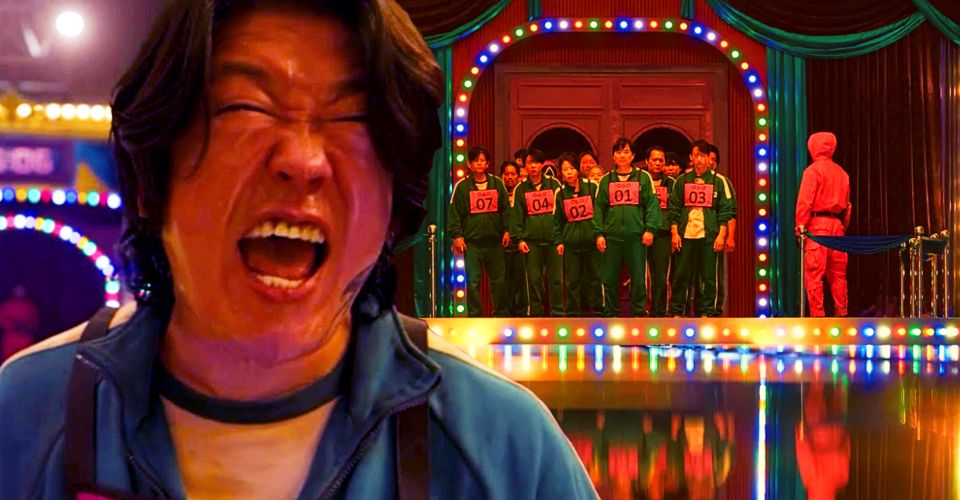Squid Game Episode 7’s Glass Bridge Game & Inspiration Explained

Squid Game episode 7 has the contestants play a confusing game where they walk on a glass bridge with faulty steps, but what is the actual task and its inspiration? Squid Game follows Seong Gi-hun as he is recruited, along with 455 other debt-ridden people, to play in death games inspired by popular South Korean children’s games. The contestants voluntarily join Squid Game, where they must win all 6 games to claim the prize money of 45.6 billion won, with the consequences for losing or breaking rules being death.
Squid Game’s first game kicks off with the highly familiar Red Light, Green Light, where players can progress forward while on a green light, and lose if caught moving on a red light. The caveat to the task is that if a player is caught moving by Squid Game’s giant doll, they’re immediately shot to death with sniper rifles. This is the brutal way that Squid Game progresses, with the honeycomb game meaning death if one doesn’t finish their shape or breaks it, game 3’s tug of war loss means an entire team falls to their death, and the marble match losses signal execution by the staff. All of the tasks come from named, popular South Korean children’s games except for Squid Game episode 7’s game 5, which has a more ambiguous corresponding game.
Challenge 5 of Squid Game begins with the remaining 16 players choosing numbers that correspond to the order in which they start the game. The middle numbers go quickly, while the first and last are slow to be chosen as nobody knows exactly what the task is. It’s then revealed that game 5 takes place on an elevated glass bridge, where Squid Game‘s characters must cross the bridge by jumping to one of the two next glass platforms. One platform is made of tempered glass, while the other is normal glass that breaks when stepped on. The game is hardest for those who go first and easiest for those who go last, as they can see where others have already successfully stepped. The task deviates from a clear corresponding children’s game, with the inspirations seemingly being a combination of Stepping Stones and Hopscotch, though the game is more unfair as it relies on luck.

Some have also speculated that the game is a larger version of Korean Chess, but when looking at the rules and consequences of stepping stones, Squid Game‘s challenge more clearly aligns with the latter and hopscotch, which has a similar premise. Stepping Stones is a game played by children where, typically, cardboard or paper pieces are set out in a path where the players are only allowed to walk on said “stepping stones.” A proctor usually gives a set pattern in which the players can walk that they have to remember, and if they get it wrong, they’re punished with a fake “shark attack” or consequence that takes them out of the game. There’s also an optional rule where if players are still on the stones when time is up, they are also “eaten,” which is one of the rules in Squid Game’s version. For viewers that have never played stepping stones, the rules can seem a bit confusing, which is why it’s been difficult for many to pin down what the actual game is. The part of Squid Game‘s high-stakes game that really differs from the rules of Stepping Stones is that they weren’t given an order to memorize beforehand; Squid Game’s is simply trial and error.
Since it’s not completely clear what the real-life rules of Stepping Stones are and how they compare to Squid Game’s within the show, some fans have tried to make loopholes to win that would actually mean breaking the rules. Many have wondered why the players couldn’t have just walked on the rails that separate the glass steps, whereas the real rules of Stepping Stones state that one can only walk on the stones, so the rail would be considered breaking the rules and in Squid Game’s case, death as elimination.
About The Author


















